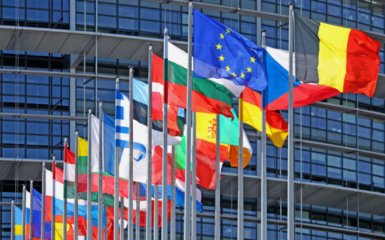On the evening of October 9, the Council of the EU reached an agreement on providing Ukraine with a package of macro-financial assistance in the amount of up to 35 billion euros, which will be part of a loan from the Group of Seven, for which the profits from the frozen assets of the Russian Federation will be used.
Points of attention
- The Council of the EU approved a 35 billion euro loan for Ukraine, part of a larger package of macro-financial assistance.
- The loan will be covered by profits from the frozen assets of the Russian Federation, with the aim of supporting Ukraine's economic recovery.
- The macro-financial assistance will be tied to specific reforms and conditions, including measures to prevent fraud and irregularities.
- The loan is expected to help Ukraine access up to 45 billion euros in total loans from the EU and G7 partners.
- Despite some challenges, such as Hungary's opposition, the EU is moving forward with the decision to provide financial support to Ukraine.
Ukraine can receive 35 billion euros in loans from the EU
The Council of the EU reached an agreement on providing Ukraine with an exceptional loan of up to 35 billion euros and a credit cooperation mechanism that will help Ukraine repay loans of up to 45 billion euros from the European Union and G7 partners.
It is about the European share of the loan for 50 billion dollars (45 billion in euros) from the G7, which will be repaid with future profits from the investment of the frozen sovereign assets of the Russian Federation, the idea of which the leaders agreed to in June.
The EU plans for funds to become available to Ukraine from 2024, and the loan to be repaid within a maximum of 45 years.
The new macro-financial assistance will be tied to the same political conditions as under the existing financial assistance mechanism from the EU Ukraine Facility, which are set out in the special reform plan (Ukraine Plan)
Management and control systems proposed under the Ukraine Plan and specific provisions to prevent fraud and other violations will also apply to this loan.
In order to speed up the adoption and ensure that Ukraine starts receiving macro-financial assistance as soon as possible, the member states have now agreed that if the European Parliament adopts the European Commission's proposal without changes, the Council will also adopt the text without amendments.
The EU Council must approve the decision by written procedure after the European Parliament adopts the text in the first reading. The decision will then enter into force the day after its publication in the Official Journal of the EU.
Credit for Ukraine from the EU using frozen money of the Russia: what is known
For US participation in the loan, it was important that the EU extend the periods during which the sanctions imposed on Russia are reviewed and extended — to give more guarantees that they will be maintained and that the profits from the frozen assets to repay the loan will continue to flow.
Hungary has consistently threatened to block this decision within the EU until the US presidential election and thus block the entire initiative.
As Reuters reports with reference to unnamed diplomats, the European Commission proposed to extend the period when the sanctions are reviewed from 6 to 36 months, but Hungary did not want to submit this proposal to the discussion of the EU ambassadors. Therefore, the adopted decision does not contain a safeguard against the sudden lifting of sanctions, as the United States wanted.
According to the same interlocutors, a vote in the European Parliament is expected on October 22.




